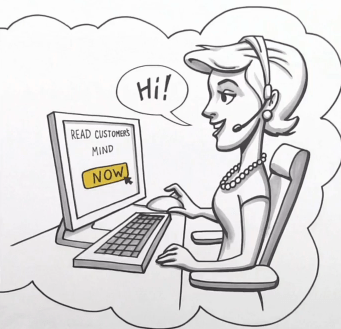
by Ydraw | Nov 20, 2013 | video
Setting Expectations: How You Can Win with Your Customers Every Time
Have you ever had an experience where you were sure the customer was going to love your work, only to find out they were disappointed or downright ticked? It was your best effort, or so you thought, and everything was delivered on time. So how could this happen? Where did you go wrong… or did you?
If you want to achieve success with most any customer, in most any situation, then it really boils down to this – you need to set proper expectations.

Sounds simple enough, by doing this one critical thing you can eliminate frustration, open more effective channels of communication, and have both parties satisfied with the results. Truly! And here’s a little bonus, this does not just apply to business relationships, but can be used to great effect with co-workers, friends, family, spouses… just about anyone with whom you share a relationship of some kind.
So how do you set proper expectations? Here’s how a great mentor once taught me a simple yet very powerful method:
1) Set expectations up front
2) Expectations must be mutually defined and agreed upon
3) If possible, write them down
1. Set expectations up front
Once you’ve let the cat out of the bag, it’s a pretty painful process to get him back in there. Same thing applies with expectations. While my memory isn’t ironclad, I can still remember first impressions, first expectations, first thoughts and feelings of a particular experience or project. Those can certainly change over time, but it typically requires a lot more work to do so. The same generally applies with your customer. Once they have an idea in their head, good luck convincing them to let it go.
You may already be setting expectations with customers and not realize it. How? Your website, your social media sites, your posts and tweets. Be mindful of what you’re “promising” or offering to customers through your various media and properties. Prices, deadlines, guarantees, services all better be 100% realistic or your customers will insist you do it, call you on it if those change, and may even it hold it against you if it doesn’t all add up in the end.
What few companies realize is that this is your “golden” opportunity to help shape the behavior of your customers. If you want your customers to complete a form, submit documents, understand your process, etc, its up to you to set that up in the beginning. It takes a little more focus and deliberate action on your part, but it will pay dividends, big time, now and down the road.
WORD OF CAUTION: If you’re in sales, you’re a big part of setting a customer’s expectations. You’re typically at the front of the process, so whatever you promise, agree to, and reinforce will be etched into the relationship from this point forward. I’m not just talking about price either. The old saying of “under promise, over deliver” is really saying don’t set expectations you can’t meet, deadlines that aren’t realistic or results that can’t be reached. Don’t set the rest of your team up for failure because you did or said “anything” just to get the sale.
2. Expectations should be mutually defined and agreed upon
“What do you want?” “I don’t know, what do you want?” Sound familiar? So here’s a tip. Unless you want a customer asking for the moon, or a 45 minute monologue of the history of their company… don’t ask “what do you want?”. Trust me, there are better ways to define expectations. Here are the 2 best questions I’ve ever heard that help people narrow down their answers to something that makes sense:
What is your best case scenario (for this project, product, experience, etc)?
Ok. Now tell me, what’s your worst case scenario?
Simple, yet incredibly effective. Why? Well, most people can articulate their best case scenario. They really can. It’s also true that most people can tell you their worst case scenario too. What I find fascinating is that often times a customer’s worst case scenario is far better than what I was imagining. But this is good. These two questions help you define the parameters, or the borders of your relationship and possible expectations. Now you can narrow it down even further with this follow up question.
So if this is your best case, and your worst case, would this (say for example ⅔ of the way to best case) be considered success to you?
If your customer answers yes? Bravo! You’ve just set the expectation of what success or victory looks like. If not, offer another possible example as success, or ask them what they consider success.
Here’s why I absolutely love this technique. First, since you’re asking the questions, you’re in control of the conversation. Second, it’s very non-threatening. It’s a comfortable discussion with no wrong answers. Third, it’s mutual. Both parties are involved in defining what the expectations should be. Fourth, it makes you seem very smart, even though it’s incredibly easy to do!
Now that you’ve defined what the expectations for success are, make sure you both agree upon them. I would recommend saying something like, “so we just decided that this (example) means success. Do you agree? Does that work for you?”. The mutual agreement is critical and here’s why. So you can hold each other accountable. If you don’t mutually agree then it’s one party imposing their expectations upon the other, and that rarely works out as intended or in a truly positive way.
3. When possible, write it down!
You’re doing great so far. You’ve set expectations at the right time – up front. You’ve had a great conversation with your customer and mutually defined and agreed what success means. Now you’ve got to write it down. Why? Humans are emotional beings, and to be honest, they change their expectations all the time. What made sense then, seems crazy now. It could be they had a bad breakfast, or got yelled at by the garbage man… who knows. But all those external elements, stresses, and situations can internally affect emotions… and expectations. Throw in the fact that people interpret body language, word meanings, and expressions differently (not to mention may have a faulty memory like mine) and you can see why setting expectations can be tricky if you don’t write it down.
It could be your regular contract with addendums, but it could also be just an email reaffirming what was discussed. But here’s why this step is really important too: What happens when one or both parties don’t meet or exceed the agreed expectations? If it hasn’t been set up front, mutually defined and agreed, and written down – it’s hard to hold either party accountable. But by writing it down and sharing it with the other party, you now know how short, close, or beyond success you’ve achieved. And you know exactly where they stand too!
Ok. So what happens if the expectations don’t work, or need to be adjusted or changed? What happens if one of the parties isn’t happy with the expectations once you get down the road? Don’t worry… it happens… it’s life and things can, and often do, go sideways.
Don’t panic. All you need to do to reset expectations is follow the same process. It will work again. I do, however, like to start by asking, “What changed? What changed to make you unhappy with the previous expectations?” This may give you insights into the other party’s concerns and provide some guidance when resetting, redefining and agreeing to a new set of expectations.
Conclusion. So there you have it. I challenge you to give it a try. It can be anything from a small task to a major project. I’ve had tremendous success for years using this method and technique. Setting expectations is such a critical part of business and personal relationships. Without doing so, it can lead to miscommunication, frustration, and poor results. But, by following the steps of setting expectations up front, mutually defining and agreeing upon them, and writing them down – not only will you know what you have to do to achieve success for your customer, they’ll know it when you claim victory and be right there with you!
+Chris Salisbury
Senior Creative Director
Ydraw
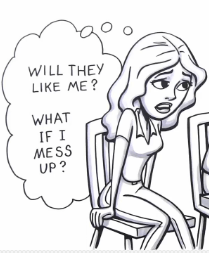
by Ydraw | Nov 20, 2013 | video
5 Reasons Why You MUST Have a Corporate Training Video
A work place filled with happy employees who are ready and eager to learn is a great sign a company hired well. Employees who are willing to learn more about the company they work for, and the industry they work in, is sure to improve their performance. So here are 5 reasons why you must have a training video.
Will a training video get my message across?
Training is a big investment employers make in their work force. When large companies offer training to their employees, it shows your employees that you value them, and the contributions they make to better the company. For example, look at this video from The Cosmopolitan Las Vegas. It is creative, will keep your employees interested, and your employees will actually remember what they watched because it’s entertaining. Seeing as zombies are in “style” now days, we decided it would be fun to incorporate them in this video while at the same time, getting your message across.
Helping your employees understand the guidelines of your work place
Each and every employee is vital to the organization and overall function of your company. Not every guest or customer sees what goes on “behind closed doors”. Training will help insure that employees understand how what they do fits into the companies’ structure, goals, and what they are trying to achieve! As a result, your employees can be motivated and excited about their work and how what they will help grow and stabilize your company. A corporate training video can help you relay this message to your employees on how important their job is to the company.
What will a corporate training video do for you and your employees?
Many times we are taught to read a book or listen to a lecture on how things are supposed to go in every day life or the work place. A video can help insure your employees are learning everything they need to know in the work place, about what do to incase of injuries, policies, daily procedures, safety, job procedures and suspicious activity. The video will put your mind at ease that your employees have learned what they need to know in regards to working for your company.
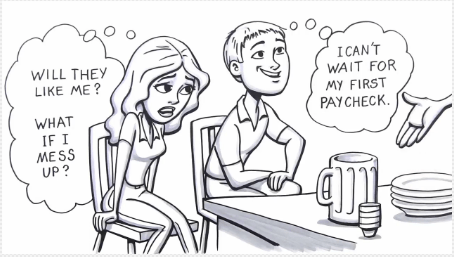
Can a corporate training video help in our employees career development?
YES! Many employees join a company not just for the job itself, but also to build an actual career. In your training video you can put in tips and opportunities for advancement within the company when the employee is doing a good job, or show them the potential they may have to advance. Training helps employees realize their goals by giving them the education they need to be more successful at their jobs. In addition to that, it will help your employees learn many of the aspects of business and higher management skills down the line.
Training is an attraction and retention tool.
Many of you may be thinking, if only it was as simple as hiring trained people and calling it good. Well, the truth is, there will always be a need for training, regardless of how experienced someone may be. Experienced people are still required to have ongoing training. Surprisingly enough, many on the lookout for a new job will not even look at a company that does not offer training and/or continuing education as apart of its employment offer. Keeping up to date on your training and eliminating your 1980’s training videos will help insure your employee’s future with your company. And also, how much you can depend on them in the future. Training is not only necessary to keep your employees current on the ins and outs of the company; it also contributes to your company’s needs and goals.
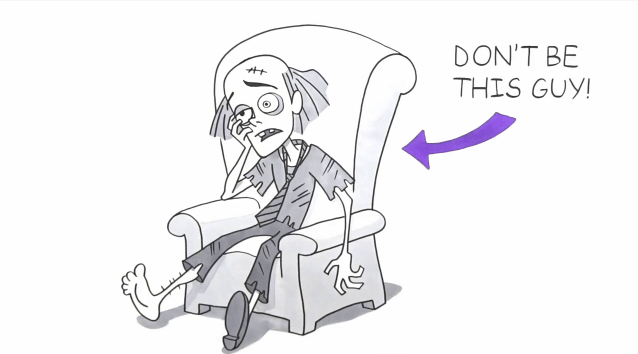
By using a whiteboard video, you will keep your employees attention and they will have greater retention. It’s time to throw those old manuals out the door along with dry power point slides. Get your training video now.
+Jace Vernon
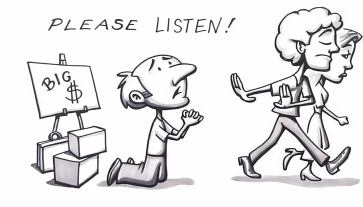
by Ydraw | Nov 6, 2013 | video
Why Video Is Not For You
Videos are everywhere and YouTube is launching stars like Justin Bieber and songs like What the Fox Says almost every day, or so it seems, … but they’re probably not for you. Sorry.
Ok, ok, before you begin a rant of why you, your business, or your product deserves a video… let me explain.
I’ve been involved in marketing in one way or another for most of my professional career, 17 years now (yikes), and this has all brought me to this conclusion…. video isn’t for you!
You see, video isn’t for you at all… it’s for your viewer, your customer, your lead, your contact, your fan, etc. It’s not meant for you, so stop being so selfish!!
I had a client the other day who said he wanted a video that would compel the viewer to contact him and buy. Sounds good. Then the client went on to say here’s the script I’ve written, here’s the visuals, here’s the music, and here are all the supporting documents. After I read what was provided I was confused. I didn’t know what the product truly was, what was being offered and more importantly, why I would care in the first place.
So… I asked the client, who’s your customer, your viewer? How familiar are they with you, your product, and what you do? His answer… “They aren’t. This is to attract new customers.” My response was, “I don’t know you, so could I be one of your customers?” His answer, “Yes, of course!”
I hated to shoot down his enthusiasm, because he was very passionate about his business, but I had no idea what he was trying to say in his script. None. There were so many details, so much business jargon, I was lost in a matter of moments… long before his conclusion and call to action. I never got that far. Why? Because the video was all about him, what he knew, what made sense to him, what he wanted, and really had nothing to do with me (the viewer). Which was why I didn’t “get it.”
Trust me. I understand your passion. I understand you have a lot riding on this video. I understand no one knows this stuff or can do it better than you… but that’s why it’s so important that the video isn’t about you. It has to provide value to the viewer, a laugh, something to remember, a reason to contact YOU.
And that’s why video isn’t for you, it HAS to be for them. So before you spend the time, money and resources to create your perfect video, make sure you are not building something that only you will find interesting to watch. Unless that’s what you had planned on all along. And if that’s the case… good luck.
+Chris Salisbury
Ydraw Creative Director
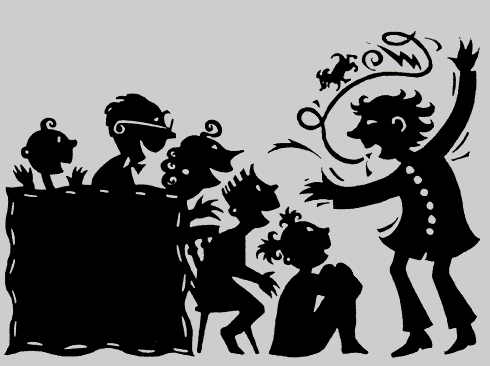
by Ydraw | Oct 30, 2013 | video
5 Traits of Viral Videos
What TV commercials do you remember? It’s probably a different answer for each person, but I’m guessing there are some similarities. The eTrade commercials with the talking baby, the Chick-Fil-A spots featuring cows with signs that say “Eat Mor Chikin”.
What about YouTube videos? Which ones stand out?
We often have clients who tell us, “I want a viral video.” Easier said than done–and while there’s no sure fire way to make a video go viral, here are common traits we’ve noticed in viral videos:
- The videos are different
- Something unexpected happens in the videos
- They are funny
- They often tell a story
- They focus on just a couple of key points
Here’s a great article about how telling a story can help promote a company’s brand and enhance business communication [http://www.fastcompany.com/3020314/bottom-line/how-screenwriting-guru-robert-mckee-teaches-brands-to-tell-stories ]
It sounds very simple but it’s true – people like stories, read stories, and respond to stories. They work.
There’s a book titled Made to Stick by Chip and Dan Heath and we reference it here at Ydraw all the time. It really helps (it’s a must-read for any business owner or marketer). The authors give a number of great examples of how a story can deliver your message better than most any other approach. They even start the book with a story!
When we’re creating a video we try to answer these 3 key questions:
Will the viewer understand it?
Will the viewer remember it?
Will the viewer enjoy it?
If we can get a “Yes” for all three, then we’re on our way (we get those positive responses by using the elements from the bullet list included above). If not, we rework it until we do. It’s a different approach for sure, but by including a narrative in videos and business communication we’ve seen better responses, higher retention rates, and more interested customers.
Give it a try! We’d love to hear your comments and your success “stories” using narratives in your efforts. Don’t be shy, you can do it!
Once again, we encourage you to Tell a Story to Make a Viral Video!
by Ydraw | Oct 19, 2013 | Video Scribing
Ok this is rather funny and embarrassing so please, no judging.
This is where it all started for Ydraw. Every company has a starting point and this was ours. 10 trips to Best Buy, 3 weeks of figuring things out, and a bunch of YouTube videos tutorials later. Ydraw was born. It is really an amazing story. Curtis and I (Jace) had zero experience in the video world and we figured it out. We just had a new idea, a demand by customers, and a heck of a lot of determination.
Video Number 2. As you can see it was a trial and error with our videos. We had to figure out our style, and what markers, papers, font, etc…worked the best for what we were trying to do.
As you can see we have improved the process a bit. Now we have some of the best artists, editors, and writers in the business instead of just two best friends trying a new business idea. We’re still going strong and growing, giving others the opportunity to do what we did. Come in and learn, and become the best. It took time and a lot of work, but eventually we figured it out.
Moral of the story: Don’t give up. It might take multiple fails, but eventually you’ll figure it out. And once you do, you can begin to figure out the best way to do what you’re trying to do.
Here at
Ydraw we have tried and failed a few times and have since perfected our video process along with our marketing process. If you have any questions or comments for us here at Ydraw, let us know and we would be happy to pass on some of this sage old wisdom. If you haven’t found what you were looking for on our blog yet, let us know, so we can take care of that immediately. We’re all about free tips.






